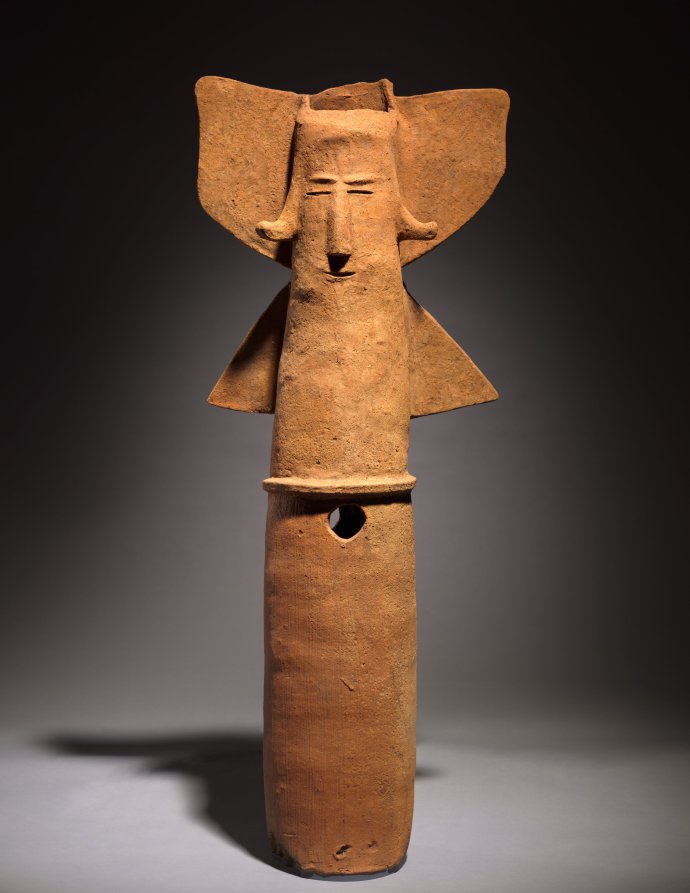| schema:description 10 | "culture: Japan, Kofun period (c. AD 300-710)" |
| schema:description | "tombstone: Haniwa in the Form of a Shield, c. 500. Japan, Kofun period (c. AD 300-710). Earthenware with applied, cut, and incised designs and red slip; overall: 120 x 48.7 x 18 cm (47 1/4 x 19 3/16 x 7 1/16 in.). The Cleveland Museum of Art, The Severance and Greta Millikin Purchase Fund 1999.170...(more)" |
| schema:description | "current_location: 235B Japanese" |
| schema:description | "measurements: Overall: 120 x 48.7 x 18 cm (47 1/4 x 19 3/16 x 7 1/16 in.)" |
| schema:description | "technique: Earthenware with applied, cut, and incised designs and red slip" |
| schema:description | "creditline: The Severance and Greta Millikin Purchase Fund" |
| schema:description | "collection: Japanese Art" |
| schema:description | "id: 160882" |
| schema:description | "wall_description: <em>Haniwa </em>(clay cylinders) topped with the form of a shield, or with a shield and quiver of arrows, appear on some tomb mounds called <em>kofun</em> (old mounds). There are also warriors holding a shield, their heads peeping out over the tops, or diagonally across their bodies. There are even some haniwa with a warrior’s helmet sitting at the top of the cylinder above the shield. This unusual object has a shield and quiver on the front, and the face of a warrior wearing a helmet on the reverse....(more)" |
| schema:description | "type: Sculpture" |

